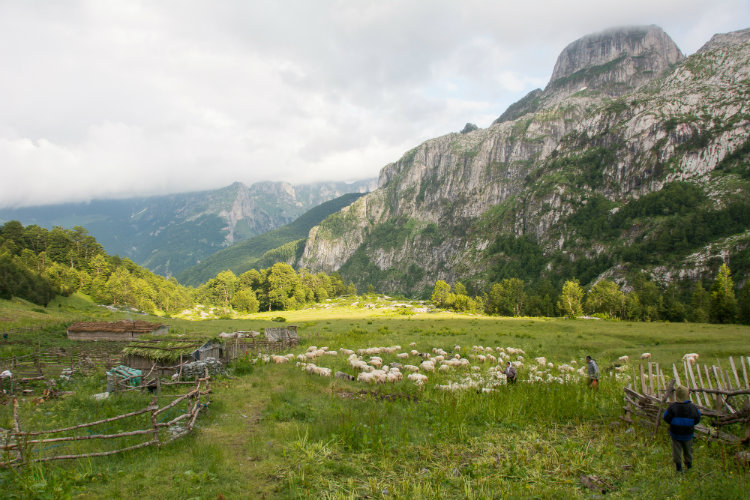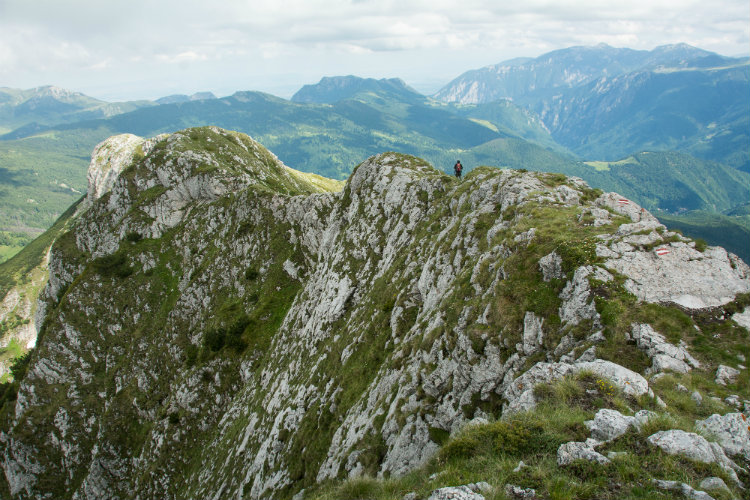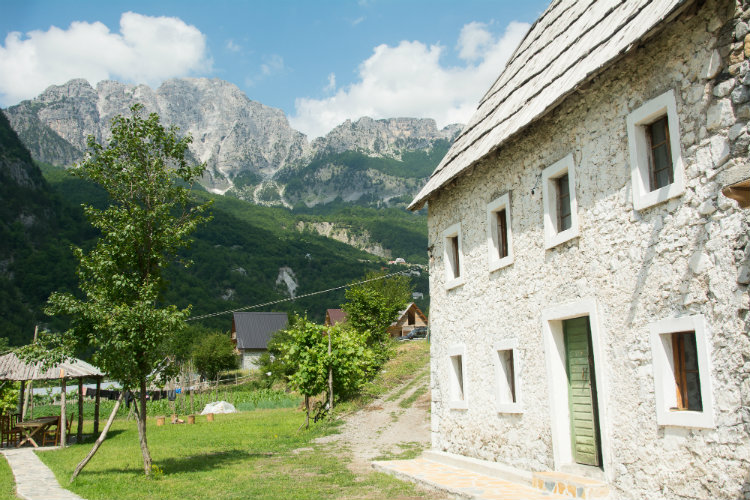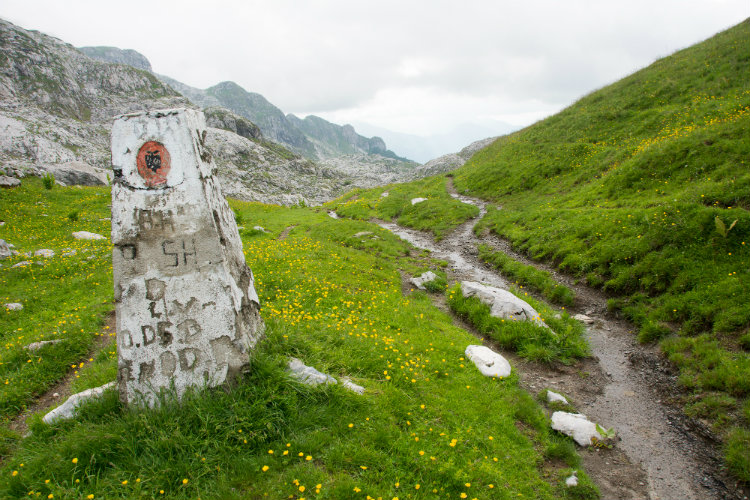Smoke rises from makeshift metal chimneys jutting from the rooftops of simple wooden shacks and stone homes. Shepherds arrived for the summer with their animals only a week ago, on the heels of the last of the melting snowpack. They will be here for only three months until the seasons change and paths are again blocked with snow.

When most people think of Albania, Kosovo and Montenegro, it’s unlikely these are the images they envision. For decades, the Accursed Mountains – the highland areas between these three nations – were closed to visitors due to a combination of conflict and isolationist policies. No longer. Today, you can hike seamlessly across borders and throughout former no man’s lands on the Peaks of the Balkans trek, admiring mountainscapes and staying with local families in villages along the way.
One of the benefits of a circular trekking route like the Peaks of the Balkans is that there are multiple entry points. This means you can hop on and off the trail at various locations if you wish to take a rest day, explore historical sites or avoid the less thrilling paved road segments.
Although the options can feel overwhelming, this flexibility allows customisation of your route to suit your trekking experience, time and budget.
Peaks of the Balkans, standard route

This 192km circuit will take you through the mountains of northern Albania, eastern Kosovo and southern Montenegro. The official route (outlined on the Peaks of the Balkans site) offers a diversity of landscapes and cultural experiences, but it does include a few asphalt road segments. Depending on your time and budget, you can arrange transfers to avoid these segments and opt instead for off-road forest trails.
This route is estimated to take 10 days, but a buffer of a couple of days is suggested to accommodate unexpected bad weather and rest days.
Modifications and add-ons

There are endless modifications you can make to the standard Peaks of the Balkans route if you want to summit nearby peaks, maximise the region’s mountain vistas and access more remote areas. Here are a few of our recommendations.
The network of family homestays and shepherd huts in villages along the trekking routes provides cultural and historical context for the Accursed Mountains. This is a region steeped in tradition and blood feuds, yet known for its hospitality. Spending each night with a different family allows you to experience that firsthand. Staying with families also allows trekkers to contribute directly to the local community and economy.
How to find family homestays

The official Peaks of the Balkans map lists the villages with family homestays and their corresponding phone numbers so arrangements can be made in advance. Not all homestays are well marked, so you may have to ask around the village to actually find them.
What to expect
Family homestays offer a bed, usually in a room that sleeps six to eight people. Sheets and blankets are provided, but it’s recommended to pack a sleep sack and travel towel to be on the safe side.
Expect three hearty meals – dinner, breakfast and a packed lunch. Most of the fresh, homemade food served comes straight from the farm where you are staying. If you are veggie, vegan or eat gluten free, don’t fear. Homestay families can provide alternatives.
Homestay costs
Expect to pay around €20 to €25 per person per night at a family homestay.

Cross-border permits: A cross-border permit is required from each country that you will be crossing into or out of during your trek. These can be secured independently from authorities in each country, but the process is bureaucratic so you may want to engage a trekking agency for this. The cost is approximately €40 for two people (€60 for more than three people). Paperwork should be submitted at least 10 days before starting the trek.
Trekking guide: If you plan to hike the complete Peaks of the Balkans route or a similar cross-border trek in this region, it’s recommended to hire a trekking guide. Technically speaking, the trails are marked, but the quality and frequency of the markings varies widely from country to country. Additionally, the remote locations make it easy to lose one’s way as you won’t often run into other people to ask directly.
If you want to contact a guide directly, the Peaks of the Balkans website features a list of independent guides. Alternatively, you can arrange for a guide through a trekking agency.
Transport: Some public transport service exists along the more populated segments of the route, including Valbona, Theth and Plav, but it is quite limited in most areas. If you coordinate your trek with an agency or guide, they can help arrange all necessary transfers and transportation in advance. Otherwise, ask your homestay family for transport options.